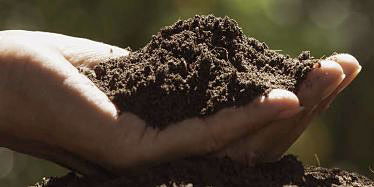Waterwise gardening
Understand and improve your soil
The key to establishing and maintaining a water-efficient garden is understanding your soil. Soils with high water-holding capacity, ample depth, effective infiltration and good drainage need less frequent watering and make best use of available rainfall.

Firstly, determine the soil type based on its texture. The three main textures are clay, sand and loam. There is a simple test you can use to check the soil’s texture.
- Gather a handful of soil, then add water gradually and mix it together in your hand until it forms a ball. (If it becomes so wet it sticks to your fingers, add some dry soil.)
- Slowly squeeze the soil between your thumb and forefinger to form a sausage shape.
- Examine the mixture:
- If the shape remains firm and will bend like plasticine, it is a clay soil.
- If the soil crumbles and you can feel and see sand in it, it is a sandy soil.
- If it holds together but is still slightly crumbly, it is a loam soil.
Clay soils
Clay has fine, dense particles that do not allow water to soak in easily. Clay soils take water slowly, so it’s best to water deeply and slowly at long intervals. When clay soils are dry, they can become hard and resist water. However, when wet, they can hold moisture for a long time, so you might not need to water again for a while.
To improve clay, dig up the soil to a depth of 30cm in your garden beds if possible (make sure the soil is not very dry or very wet when you do this). Some clay soils benefit from adding gypsum or dolomite to this depth.
Next, dig in plenty of organic material such as compost or manure. Then add a layer of organic mulch.
Sandy soils
While these soils have low moisture and nutrient-holding capacity, they are usually well aerated and easy to cultivate.
They can be hard-setting with poor infiltration once they have dried out, so using a wetting agent may help. Digging in plenty of organic matter will also improve sandy soils by adding nutrients and increasing water holding capacity.
Loam soils
Loam refers to any soil that is between sand and clay soils. Loams are considered to be the best soils for growing plants.
Like all soils, loams can be improved and maintained by adding organic matter such as compost and manure.
Water deeply and infrequently. Applying wetting agents may also help the soil better absorb water.
Read more about how to identify and improve your soil (PDF, 563KB).
In this guide:


